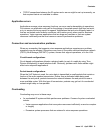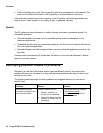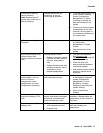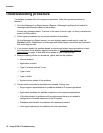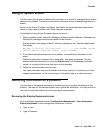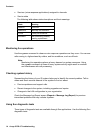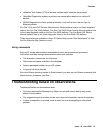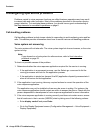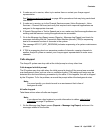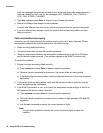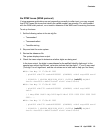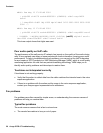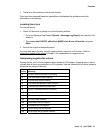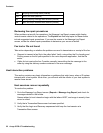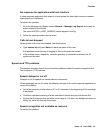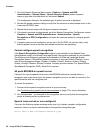
Contents
Issue 1.0 April 2006 17
4. If cards are not in service, either try to restore them or contact your Avaya support
representative.
See Restoring cards and channels
on page 48 for procedures that may bring cards back
into service.
5. If cards are in service, go to the Channel Services screen (Voice Equipment > Voice
Services > Channel Services) and verify that required voice response applications are
assigned to the appropriate channels.
6. If Speech Recognition or Text-to-Speech are in use, make sure that those applications are
working and that servers running the applications are accessible.
7. Go to the Message Log Report screen (Reports > Message Log Report) and check for
messages indicating that the Transaction State Machine process (TSM) is respawning
due to an excessive number of channels in the system.
The message MTC017 (MTC_RESPAWN) indicates respawning of a system maintenance
process.
8. If TSM is respawning due to an excessive number of channels, reassign channels to
another Avaya IR system or contact your Avaya support representative to order more
channels.
Calls dropped
The Avaya IR system can drop calls at the initial prompt or at any other time.
Calls dropped at initial prompt
The IR system may drop calls when the initial prompt is playing if the prompt was recorded
over background noise, such as a fan or ventilation system. The background noise may be
detected as a dial tone following connection by the caller. If this happens, the call is dropped
by the IR system. To fix the problem, re-record the prompt without the background noise.
Note:
For sound quality, you should record in an environment that is free of
background noise.
All calls dropped
Take these actions when all calls are dropped:
Note:
If you depend on a host system to provide information to callers, refer to Host
interaction on page 22 problems.
1. Go the Message Log Report screen (Reports > Message Log Report) and scan it for
messages related to the trouble.



